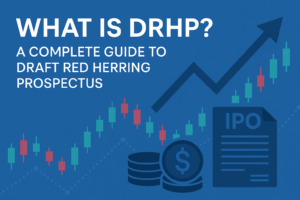IPOs Difference Between Book Building and Fixed Price: Which One Favors Retail Investors?
👉 Introduction
When a company decides to go public, it chooses between two IPO pricing methods used in IPOs: Fixed Price and Book Building. Each type works differently and affects how shares are allocated, priced, and traded in IPOs. Retail investors benefit differently based on the method. In this guide, we unpack both IPO models in simple terms and show which method favors retail participation.
What Are Fixed Price IPOs?
In a Fixed Price IPO, the company sets a firm price per share before going public. Retail investors see this price in advance. They know exactly how much they must pay., apply at that fixed rate, and block the funds in advance. If they don’t get shares, they get refunds.
Highlights of Fixed Price IPOs:
- Price stays unchanged throughout the offer
- Investors know in advance what to pay
- Simple process for retail investors
- But may misprice shares: too high or too low
What Are Book Building IPOs?
In a Book Building IPO, the company sets a price range (e.g., ₹50–₹70). Investors bid within this range: they pick quantity and price. After the deadline, the final price (cut-off) is set where demand matches supply.
Highlights of Book Building IPOs:
- Price range is public; final price is demand-driven
- Daily updates on subscription help investors decide
- Offers better price discovery and transparency
- More flexible pricing than fixed method
Key Differences: A Side-by-Side Look
| Feature | Fixed Price IPO | Book Building IPO |
|---|---|---|
| Price Setting | Set in advance | Market-driven; price band |
| Price Certainty | Known before bidding | Revealed after bidding |
| Payment Timing | Upfront payment | ASBA blocks funds |
| Demand Insight | No subscription data | Daily demand updates |
| Price Discovery | Less efficient | More efficient |
| Allocation Fairness | May over/underprice | Balanced and fair |
Which One Is Better for Retail Investors?
Both methods serve different investor styles.
Fixed Price:
- Good for beginners who want clarity and ease
- No bidding strategy needed
- However, it may leave out profits if priced too low
- It may turn expensive if priced too high
Book Building:
- Deals with one price (cut-off) for retail bids
- Retailers often get priority at cut-off
- They see demand live and can adjust plans
Verdict: Book Building generally favors retail investors more. It brings better pricing, fair chances, and transparency.
Pros and Cons for Retail Investors
Fixed Price IPOs
Pros:
- Easy to understand
- Clear cost
- No bidding stress
Cons:
- Prone to mispricing
- Might miss listing gains
- No subscription tracking
Book Building IPOs
Pros:
- Market-aligned pricing
- Retail prioritization at cut-off
- Daily updates on demand
Cons:
- Requires understanding bidding
- You don’t know the final price before bidding
- Some strategy needed
When to Choose Each Method
- Choose Fixed Price if:
- You want low complexity
- You prefer certainty
- Choose Book Building if:
- You’re okay with bidding
- You seek better pricing
- You want to track demand
Most large IPOs in India now use Book Building.
Real-World Examples
- Old IPOs (1990s): Mostly Fixed Price
- Modern IPOs: Nykaa, LIC, Zomato used Book Building
- Data shows: Book builds reduce underpricing and give better price discovery
Tips for Retail Investors
- Always bid at cut-off price in Book Building IPOs
- Watch daily subscription, especially retail and QIB demand
- Use ASBA method to block funds smartly
- Apply early, especially on Day 1 or 2. Avoid last-minute rush
- Check price band carefully. Make sure your bid stays within it
- Read the RHP (red herring). Understand business and risks
- Track GMP (Grey Market Premium) for demand insights
Conclusion
To sum up:
- Fixed Price gives clarity but may reduce gains
- Book Building offers better pricing and fairness
- Retail investors gain more in Book Building IPOs. They get a cut-off advantage and transparency
- Yet, you must bid smartly and act early
So next time you see an IPO, know which method gets you better deals as a retail investor.
Frequently Asked Questions (FAQs)
1. What is cut-off price in a book-building IPO?
It is the final issue price set after the IPO ends. Retail bids at cut-off go through without rejection.
2. Can retail investors choose price in Book Building?
They don’t pick it. They bid at cut-off or within the band and get shares based on demand.
3. Which IPO type offers daily subscription updates?
Only Book Building IPOs share subscription data daily.
4. Do retail investors pay upfront for shares in Book Building?
No. ASBA blocks the amount and debits only if shares are allotted.
5. Should I skip Fixed Price IPOs entirely?
No. If you prefer simplicity and known costs, they can still fit your needs. But be aware of possible under/overpricing.
Share this content:






Post Comment